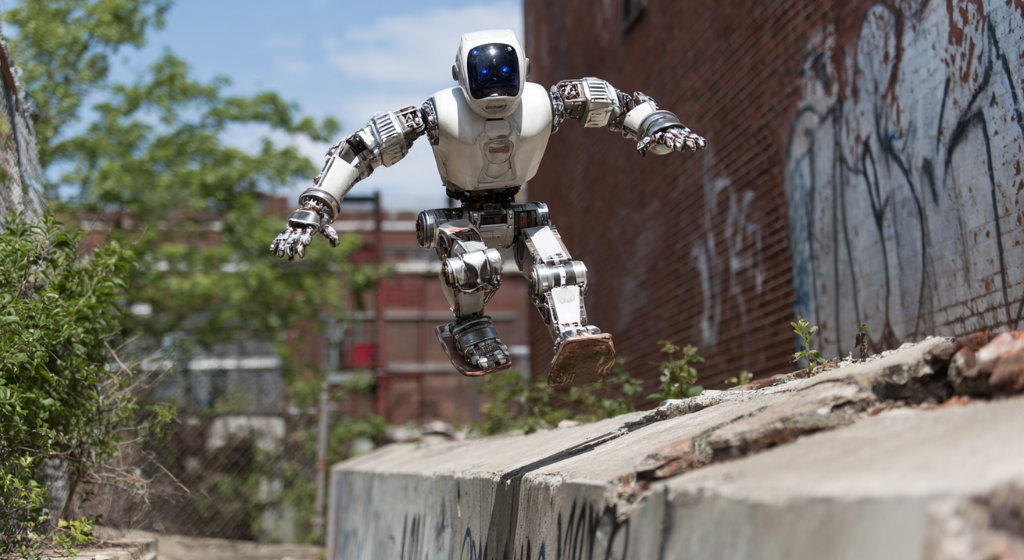
Korean researchers have built Raibo, a four-legged AI-powered robot capable of performing advanced parkour maneuvers, signaling a major leap in robotic mobility and potential disaster-zone applications. (Source: Image by RR)
Future Versions of Raibo Aim for Use in Disaster Response and Extreme Conditions
A team of researchers at Korea’s Robotics & Artificial Intelligence Lab has unveiled a groundbreaking four-legged robot named Raibo, capable of executing high-speed parkour maneuvers. Published in Science Robotics, their study details how they equipped Raibo with an advanced controller that enables both motion planning and real-time movement tracking, allowing the robot to autonomously navigate complex, real-world environments. Parkour—characterized by jumping, climbing, and traversing unpredictable terrain—was the inspiration for this robotic feat, and adding four legs was the team’s first major design decision to ensure balance and agility.
To enable such nimble movement, the team developed a neural network-powered planner that could continuously generate and update a map of the terrain. This mapping data, combined with camera and feedback sensor input, allowed Raibo to decide in real time where to place its feet and how to maneuver safely through various obstacles. The AI-driven system, as noted in techxplore.com, lets Raibo adapt dynamically, recalculating routes and foot placement to maintain both speed and safety on difficult terrain.
Raibo underwent extensive testing, first in simulations and then in controlled lab environments. The robot successfully ran vertically on walls for short stretches, leaped 1.3 meters across gaps, navigated rocky terrain, climbed ramps and stairs, and stepped on and off raised platforms. These tests demonstrated Raibo’s agility and the effectiveness of its neural planning and feedback-based control system.
Looking ahead, the team has already developed Raibo 2, which is undergoing further testing and refinement. Researchers hope to enhance its capabilities and ensure safe operation in unpredictable situations. With future improvements, robots like Raibo could be deployed in disaster zones or hazardous areas where traditional machines or humans might struggle to operate safely.
read more at techxplore.com







Leave A Comment